Physical Address
304 North Cardinal St.
Dorchester Center, MA 02124
The femoral nerve is the largest branch of the lumbar plexus and is comprised of branches from the L2 to L4 nerve roots. It is a mixed nerve with motor branches innervating hip flexors and knee extenders, as well as sensory branches innervating the hip, knee, and skin of the anteromedial leg. There are a variety of ways in which the nerve can be injured, and, given its anatomical course, it is susceptible to entrapment in multiple areas. Pain syndromes related to the femoral nerve can have significant effects on patients’ mobility and function. Advancements in peripheral nerve stimulation (PNS) provide an alternative means of controlling pain in some of these patients. This chapter will review injuries to the femoral nerve, as well as the use of PNS in treatment.
The femoral nerve complex has multiple branches of both sensory and motor nerves extending from various locations along its length. Therefore, symptoms and signs of femoral nerve disruption, injury, or entrapment differ greatly based on the location of the insult. These insults can range from proximal lesions that result in significant motor weakness of hip flexors and knee extensors to distal lesions with purely sensory deficits of the medial calf. Other clinically important presentations of femoral nerve disruption include articular hip pain and anterior knee pain due to small articular branches that partially innervate both joints. These pains can be chronic or acute in nature and attributed to the result of injuries to the joint themselves or recent orthopedic procedures.
Areas of paresthesia and numbness associated with femoral nerve entrapment or neuropathy include the iliac fossa, inguinal region, anterior thigh, medial calf, and foot, sometimes including the big toe (from the saphenous branch of the femoral nerve) ( Fig. 24.1 ). Typical motor symptoms include weakness of the quadriceps muscles that spares leg adduction and a diminished patellar reflex. Mild cases usually present as knee weakness and buckling when walking that can result in frequent falls. More severe neuropathies can lead to more significant weakness and atrophy of the quadriceps muscle group. Although these weaknesses may not be as apparent when walking on level ground, they can be accentuated as patients attempt to navigate stairs or inclines. They have difficulty as they try to lead with the affected leg ascending stairs and, conversely, will keep the affected leg in the lead position as they descend stairs. Signs of significant femoral nerve entrapment can also include severe pain in the groin or thigh and flexion contracture of the hip with lateral rotation of the thigh.

Causes of femoral nerve lesions or entrapments range from medical conditions such as diabetes to iatrogenic trauma ( Table 24.1 ). The true incidence of iatrogenic femoral nerve injury is not well known. It has, however, become a recognized complication of childbirth and various procedures including hip arthroplasty, inguinal lymph node dissection, and open or laparoscopic surgeries of the abdomen and pelvis. It has been suggested that the mechanism of injury from these surgical procedures stems from prolonged maintenance of the lithotomy position or retractors, causing stretching, compression, and ischemia of the nerve, rather than from the procedures themself.
| Medical Conditions | Iatrogenic Causes |
|---|---|
| Diabetic neuropathy | Hip arthroplasty |
| Infections | Pelvic surgery |
| Hemophilia/coagulopathies | Abdominal or vaginal hysterectomy |
| Aortic aneurysm | Laparoscopic procedures |
| Renal transplant | |
| Self-retaining retractors | |
| Lithotomy positioning |
Another important femoral nerve symptom is pain after lower extremity amputation. Following amputation, up to 70% to 80% of patient experience significant pain. Postamputation pain (PAP) can be debilitating for patients and can drastically impact their quality of life and recovery. PAP can include residual limb pain as well as phantom limb pain. These limb pains can be truly nociceptive due to innervated tissue injury or neuropathic in nature secondary to nerve transection. Due to the varied presentations of femoral nerve injury, a good history and physical are essential in diagnosis.
The femoral nerve originates from the posterior divisions of the ventral rami of the L2, L3, and L4 spinal nerves. It is the largest branch of the lumbar plexus and arises from within the psoas muscle. It is a mixed motor and sensory nerve responsible for innervating the anterior muscles of the thigh and giving sensory branches to the hip joint, anterior medial thigh, and anterior knee, as well continuing on as the saphenous nerve to innervate the lower leg ( Fig. 24.2 ).
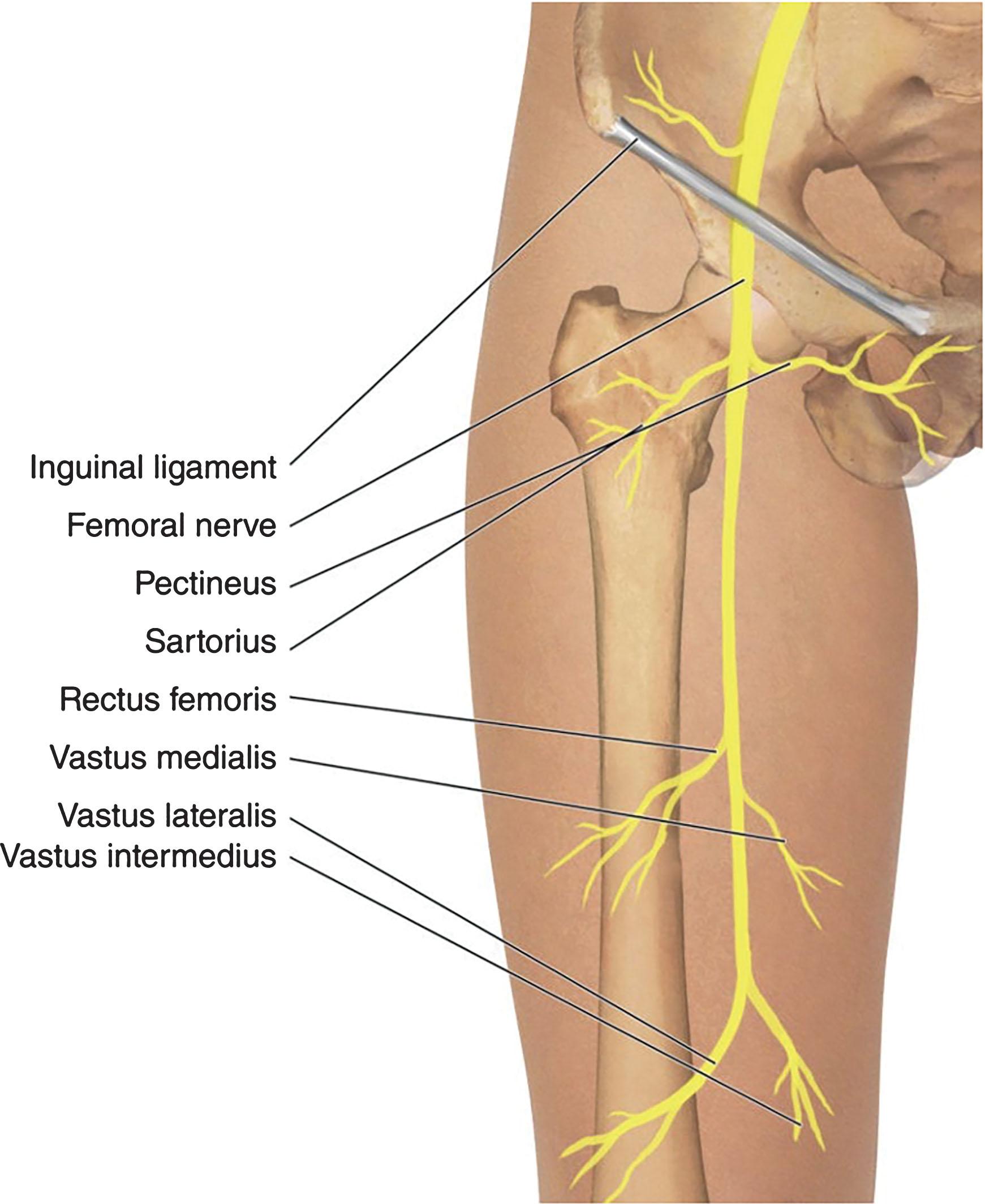
After the nerve’s origination, it exits the psoas muscle as part of the lumbar plexus ( Fig. 24.3 ) and travels between the iliacus and psoas muscles within the iliacus compartment. As the nerve descends inferiorly toward the inguinal ligament, it gives off motor branches to both the iliac and psoas muscles. Before passing beneath the inguinal ligament, the femoral nerve approaches the external iliac artery and vein, which lie medially. The femoral nerve, internal iliac vessels, and iliopsoas muscle travel beneath the inguinal ligament through a fibromuscular canal that is formed by the iliac fascia ( Fig. 24.4 ).
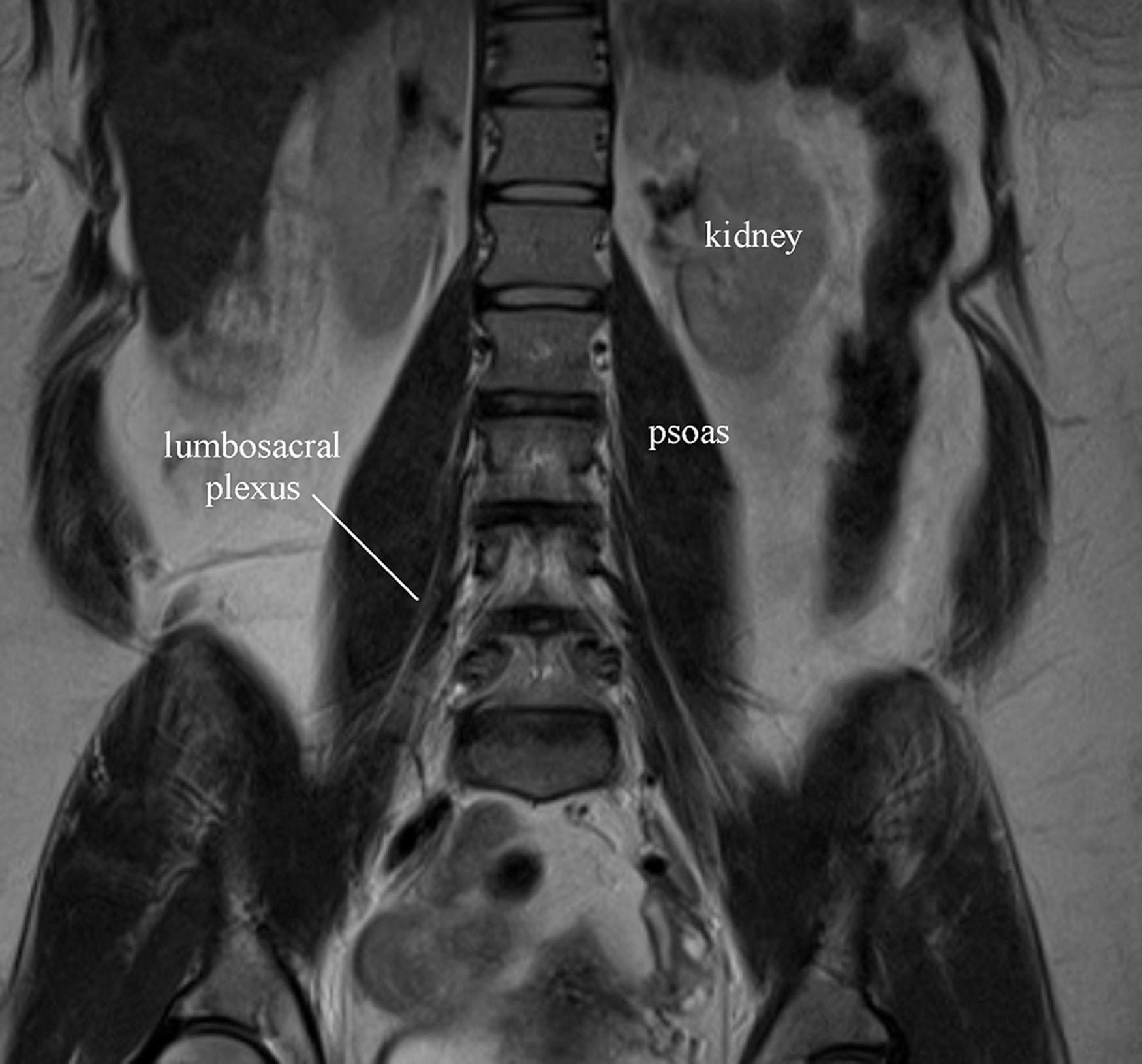
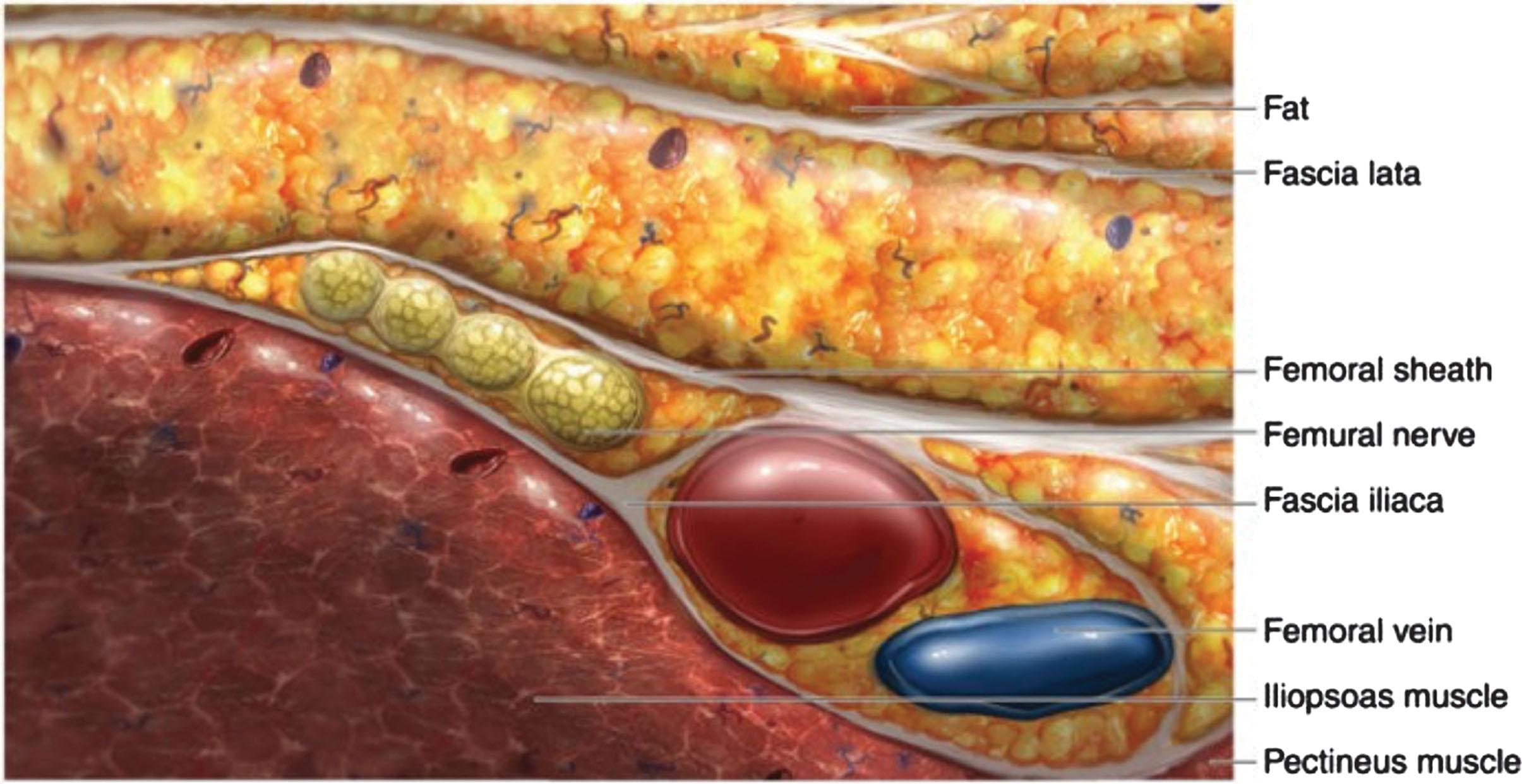
After passing beneath the ligament, motor branches to the sartorius and pectineus muscles and articular branches to the hip joint and anterior capsule emerge as the nerve enters the femoral triangle ( Fig. 24.5 ). Within the femoral triangle, the nerve’s location in relation to other important structures can be remembered with the “VAN” mnemonic, which give the relation of the vein, artery, and nerve from medial to lateral ( Figs. 24.6 and 24.7 ). As the nerve passes through the femoral triangle, it separates into anterior and posterior divisions. The anterior division carries motor branches to the sartorius muscles and the anterior cutaneous sensory branches, which provide sensory information of the anterior thigh proximal to the knee. The posterior division contains motor branches to all four quadriceps muscles (rectus femoris, vastus lateralis, vastus intermedius, and vastus medialis). Continuation of the nerves to the vastus medialis, vastus intermedius, and vastus lateralis provide articular innervation to the anterior portion of the knee ( Fig. 24.8 ). After giving off motor branches to the quadriceps, the posterior branch of the femoral nerve ends as the saphenous nerve. The saphenous nerve continues traveling inferiorly and provides sensory information to the medial portion of the lower leg down to the medial arch of the foot and big toe. Due to the femoral nerve’s anatomical course, there are multiple locations where it is particularly susceptible to entrapment or lesion.
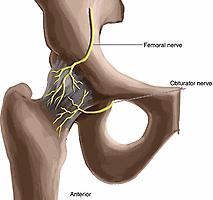
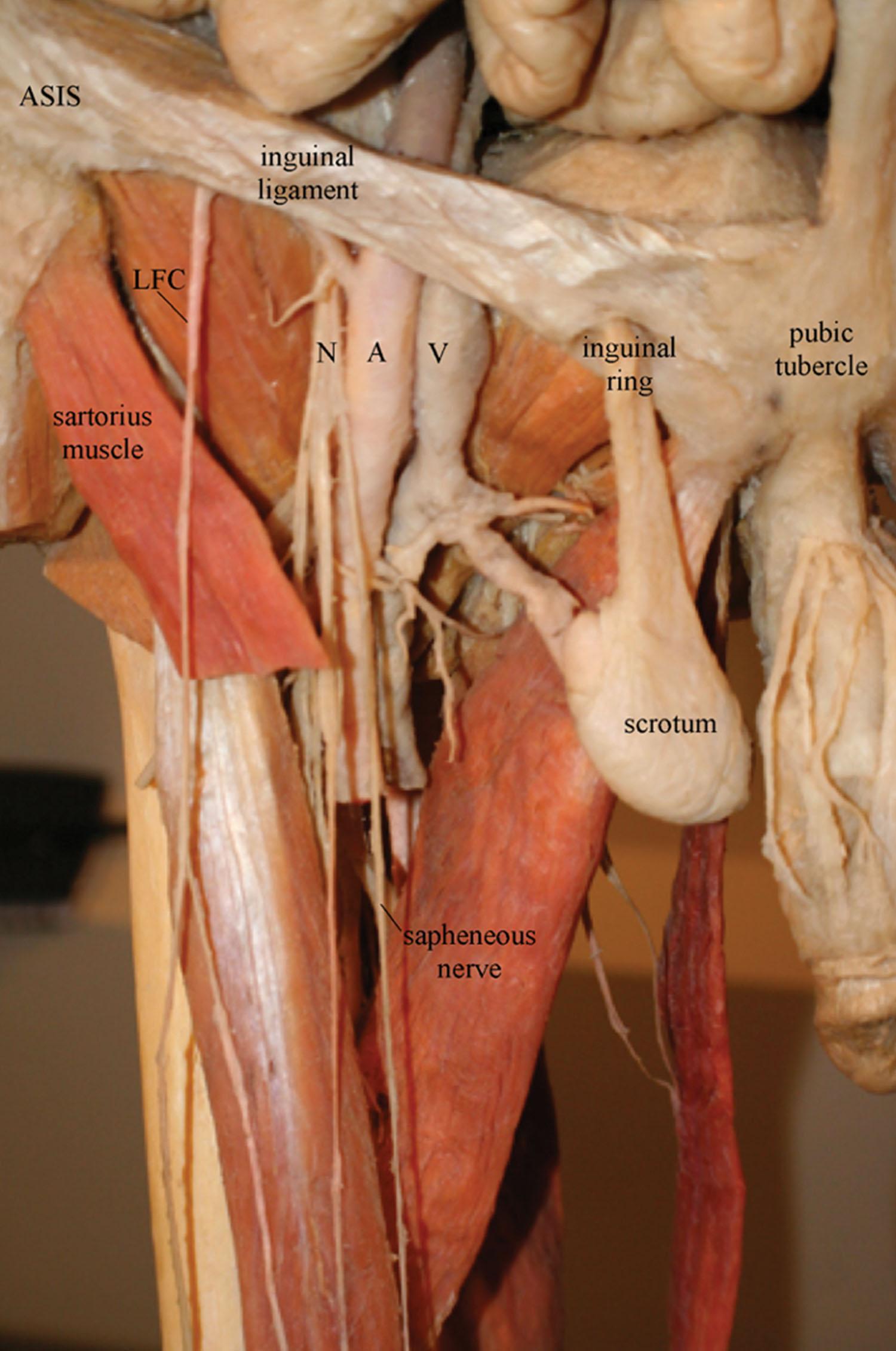
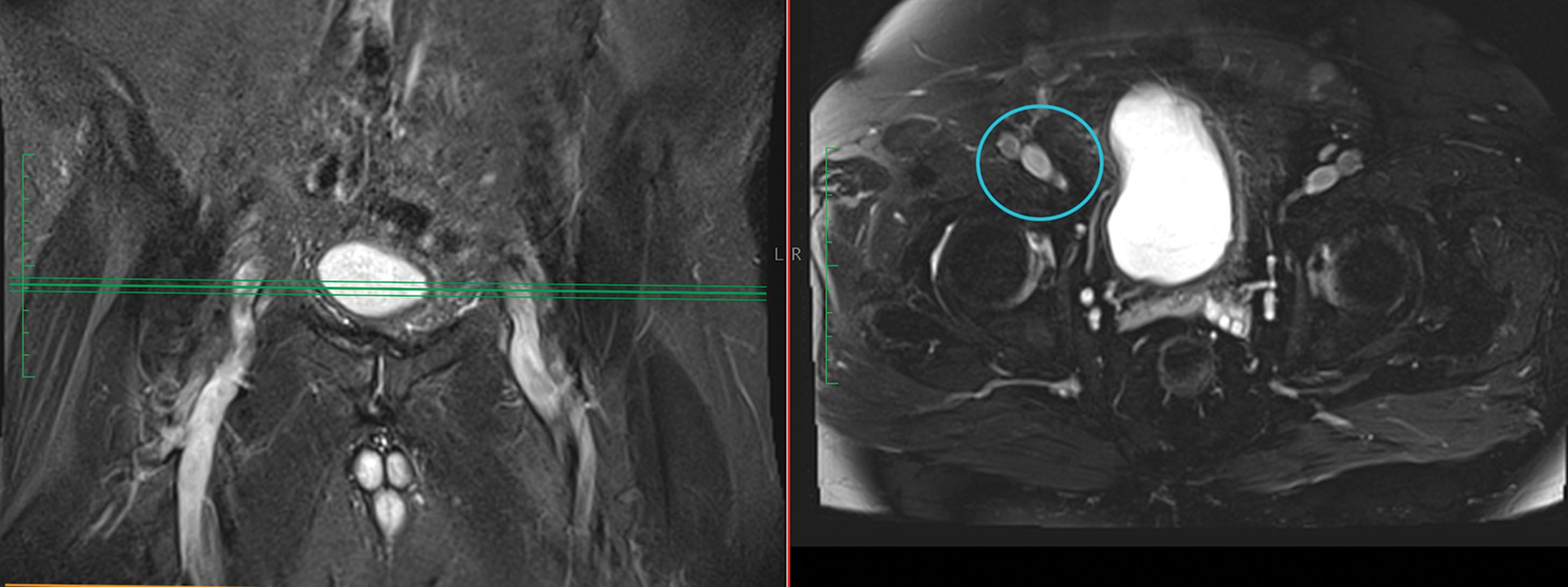
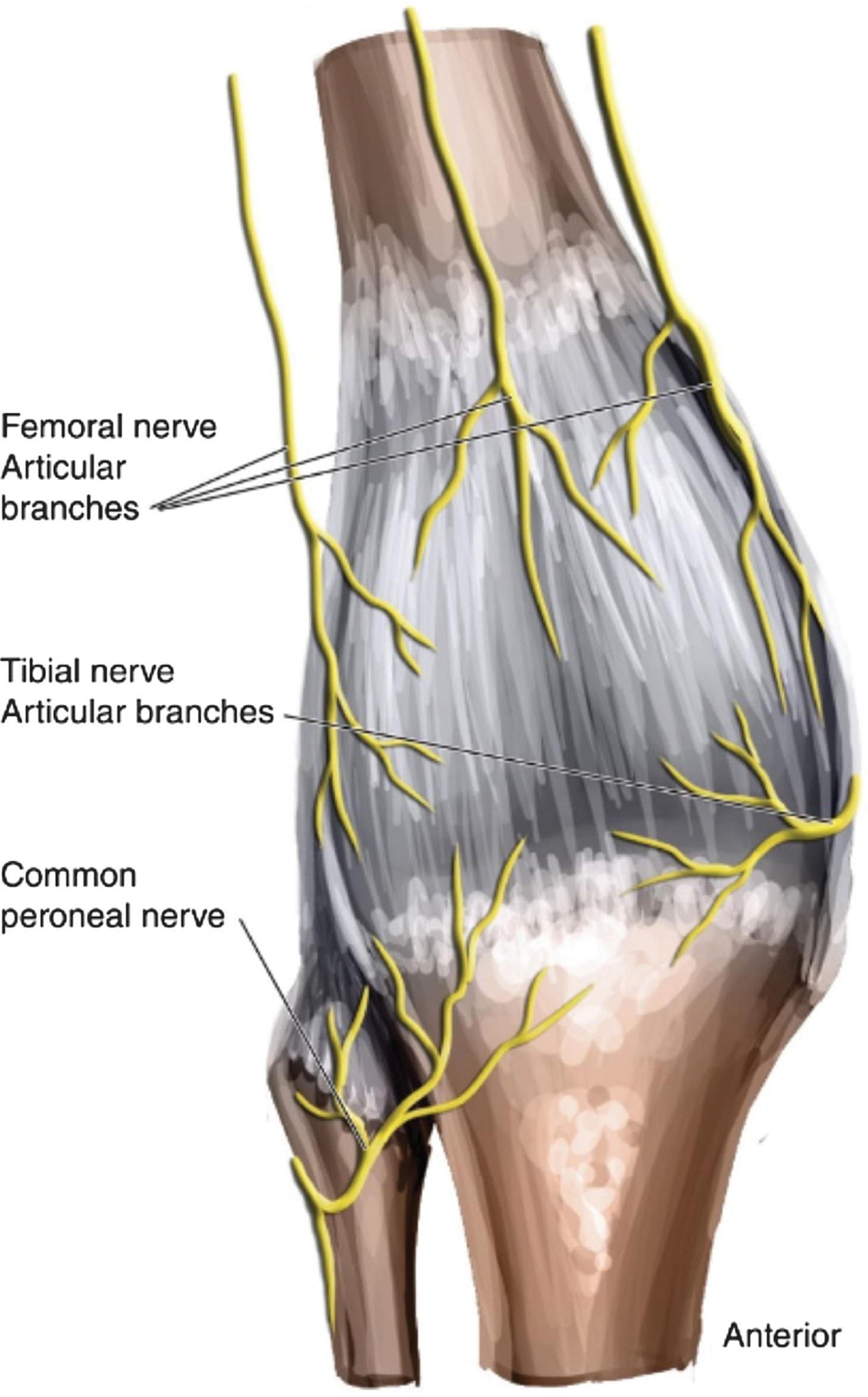
When obtaining a history for potential femoral nerve entrapment or injury, patients should be asked about potential risk factors as well as recent procedures they have undergone. Most entrapments of the femoral nerve occur in the iliacus compartment or at the inguinal ligament. Therefore, injuries within the pelvis such as an iliopsoas muscle tear or a hematoma can lead to nerve compression. These injuries would be more likely found in patients who are competitive athletes or who have a bleeding disorder. Injuries to the nerve are most often iatrogenic in nature and are often related to a recent procedure. This could include any procedure involving the abdomen, pelvis, or lower extremity, including child birth, femoral artery interventions, and even femoral nerve blocks. Another documented cause of femoral nerve injury is neurapraxia from overstretching of the nerve in dancers. Because of its relationship to the femoral artery, it is at risk during femoral artery cannulation, such as a cardiac catheterization. More obvious causes of injury to the femoral nerve would include any form of trauma to the hip, pelvis, or anterior thigh.
Become a Clinical Tree membership for Full access and enjoy Unlimited articles
If you are a member. Log in here